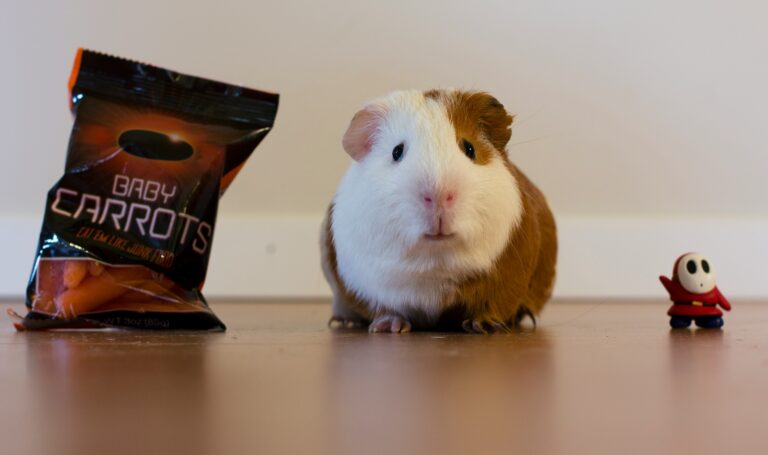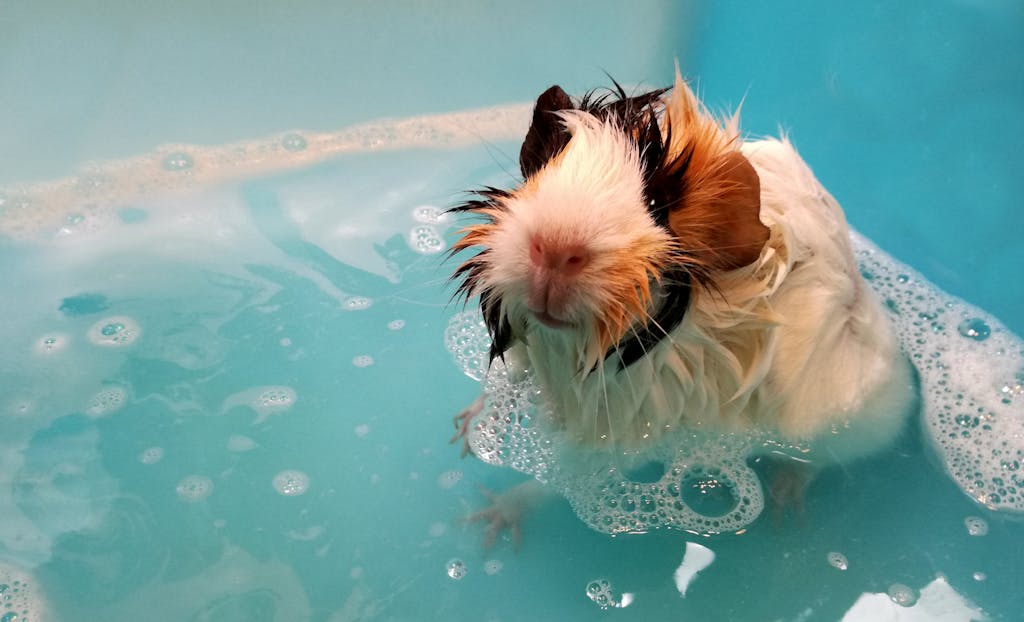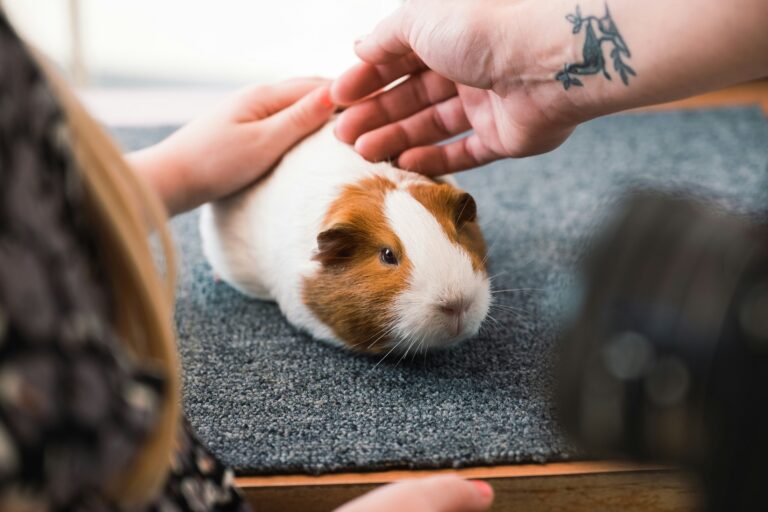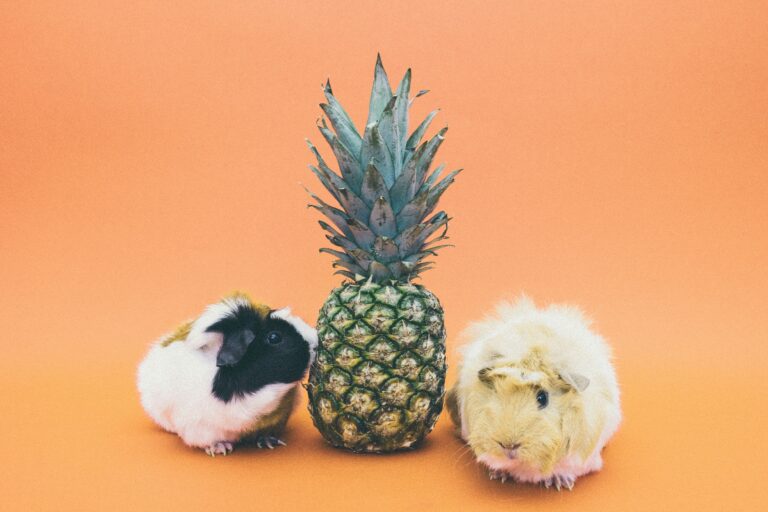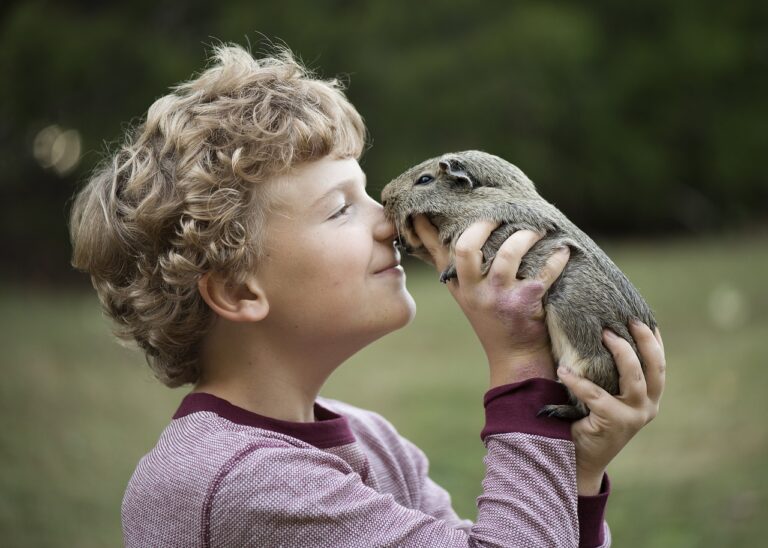A Guide to Guinea Pig Bonding

Guinea pigs, often affectionately referred to as “piggies,” are delightful and social creatures that thrive on companionship! When you decide to introduce new guinea pigs to each other, it’s essential to understand the process of guinea pig bonding to ensure a harmonious relationship among your furry friends.
Whether you’re bringing home your first pair or adding to your existing herd, this guide will walk you through the steps to successfully bond your guinea pigs.
Understanding Guinea Pig Behavior
Before diving into the bonding process, it’s crucial to comprehend guinea pig behavior.
These small mammals are highly social by nature, living in groups called herds in the wild. Domestic guinea pigs exhibit similar social behaviors, seeking companionship for security, comfort, and enrichment.
Understanding their natural inclinations will help you facilitate bonding more effectively.
Recognizing Social Cues: Guinea pigs communicate through various sounds, postures, and behaviors. Understanding their cues can help you gauge their interactions during the bonding process. Signs of acceptance include gentle nose nudges, shared grooming, and relaxed body language. Conversely, signs of aggression or discomfort may include teeth chattering, chasing, or raised fur.
Establishing Hierarchy: Guinea pigs establish a hierarchy within their group, which can lead to occasional dominance displays or minor conflicts. These behaviors are a normal part of socialization and usually resolve without intervention. However, it’s essential to monitor their interactions closely to ensure they don’t escalate into serious fights.
Pre-Bonding Preparations
Before introducing your guinea pigs, it’s essential to prepare their environment and ensure they are in optimal health. Here are some pre-bonding preparations to consider:
Health Check: Schedule a vet check-up for both guinea pigs to ensure they are healthy and free from any contagious diseases. Address any health concerns before initiating the bonding process.
Separate Enclosures: Keep your guinea pigs in separate but adjacent enclosures for a few days before introducing them. This allows them to become familiar with each other’s scent and presence without direct contact.
Neutral Territory: Choose a neutral area for the initial introductions, such as a spacious playpen or a neutral room where neither guinea pig has established territory.
The Bonding Process
The bonding process requires patience, observation, and gentle intervention when necessary. Follow these steps to facilitate a successful bond between your guinea pigs:
Initial Introduction: Begin by placing both guinea pigs in the neutral territory and observe their interactions. Expect some initial curiosity, sniffing, and exploration as they become acquainted with each other.
Supervised Playtime: Allow the guinea pigs to interact under close supervision for short periods, gradually increasing the duration over several days. Provide plenty of hideaways, tunnels, and toys to prevent conflicts and offer opportunities for exploration.
Positive Reinforcement: Offer treats and praise when the guinea pigs exhibit friendly or relaxed behavior towards each other. Positive reinforcement encourages bonding and helps create positive associations between the guinea pigs.
Monitoring Behavior: Pay close attention to their interactions, looking for signs of aggression or discomfort. If conflicts arise, such as chasing or mounting, gently separate the guinea pigs and try again later. Never leave them unsupervised until their bond is fully established.
Bonding Sessions: Schedule regular bonding sessions, gradually increasing the time they spend together. Over time, their interactions should become more relaxed as they develop trust and familiarity with each other.
Troubleshooting Common Issues
Despite your best efforts, bonding guinea pigs may encounter challenges along the way. Here are some common issues and tips for addressing them:
Aggressive Behavior: If one guinea pig consistently displays aggression towards the other, consider temporarily separating them and reintroducing them using gradual, supervised introductions.
Scent Swapping: If initial introductions are challenging, try scent swapping by exchanging bedding or toys between the guinea pigs’ enclosures. This helps familiarize them with each other’s scent before direct interaction.
Patience and Persistence: Bonding guinea pigs can take time, especially if they have strong personalities or previous negative experiences. Be patient, consistent, and persistent in your efforts, and don’t rush the process.
Conclusion
Bonding your guinea pigs is a rewarding experience that enriches their lives and strengthens their social bonds.
By understanding their behavior, preparing adequately, and following a gradual introduction process, you can help foster a harmonious relationship between your furry companions.
Remember to prioritize their safety, monitor their interactions closely, and celebrate each milestone as they become lifelong friends.
With patience, love, and dedication, you’ll witness the joy of seeing your guinea pigs thrive in each other’s company!

